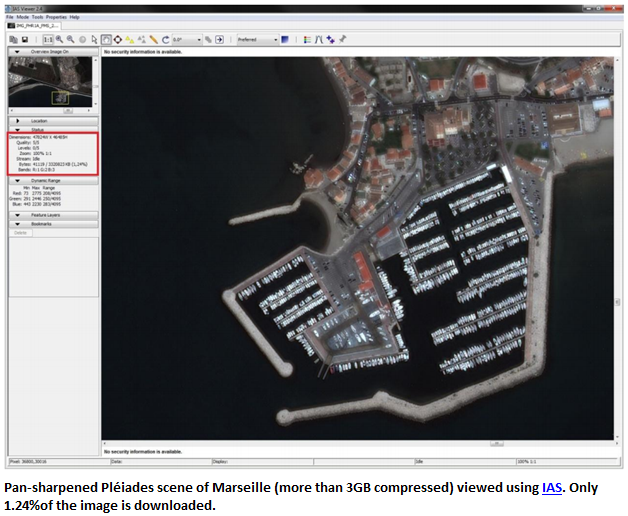Why Adopt JPEG 2000?
Anonym
Recently we (Exelis VIS Europe) got together with
Astrium GEO-Information to present an overview of the benefits of adopting
JPEG 2000 and to give users a feel for the advantages of adopting this standard. JPEG 2000 is an open standard for compressing very large, multiple-band, and high bit-depth images. Developed to meet the need of increasing file sizes and file transfer, these functional improvements serve well the GIS and remote sensing communities who appreciate the enhanced compression capabilities, low storage overhead, and increased unpacking and download speeds providing access to highly detailed images over very large areas. As a result JPEG 2000 has been successfully adopted by organizations including
National Geospatial-Intelligence Agency (NGA),
North Atlantic Treaty Organization (NATO), and
Open Geospatial Consortium (OGC).
Along with compression, JPEG 2000 achieves flexibility and scalability by managing how the image is compressed (lossy/lossless) and decoded. For example in decoding the user can view the image in various resolutions without creating and storing additional pyramids and can display, pan, and zoom without decompressing the entire image as shown below, speeding process workflows:

Another feature of JPEG 2000 of specific interest to client/server deployments is the ISO protocol (JPIP) which provides the ability to stream a region of interest with specific resolution and/or quality without having to decompress and/or download the entire image. This gives users quick access to the data and the ability to review capabilities across large areas of interest in a scene. Since downloading and storing the entire image can be prohibitive, streaming only a portion of the area of interest takes a few seconds and can be achieved over low bandwidths.

Increasingly users with the support of tools such as
ENVI and
IAS are discovering the advantages of adopting the JPEG 2000 protocol. To learn more watch this
recorded webinar and download the
white paper “Why Adopt JPEG 2000?”